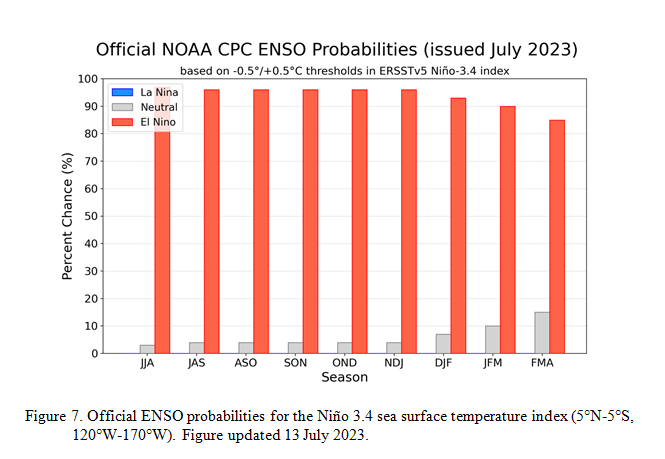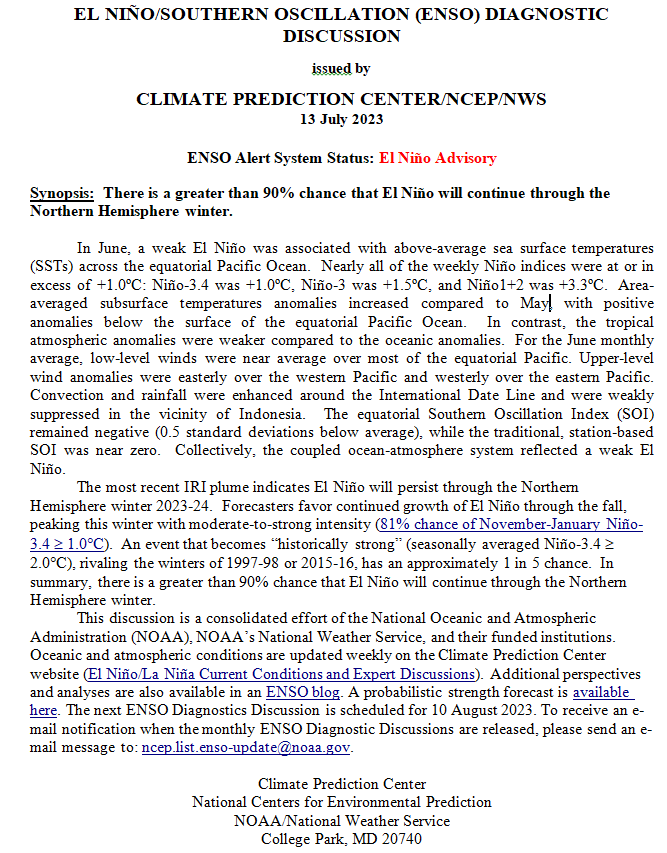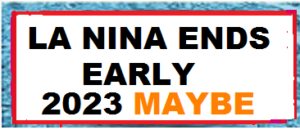NOAA Updates its ENSO Alert on July 13, 2023 – El Nino is here and 90% Likely to Last through Winter with a 20% Chance of a MegaNino
On the second Thursday of every month, NOAA issues its analysis of the status of ENSO. This includes determining the Alert System Status. NOAA again describes their Report as “ENSO Alert System Status: El Nino Watch”
There is not much doubt that we have an El Nino. How long it lasts and its strength remains to be seen.
From the NOAA Analysis:
CLIMATE PREDICTION CENTER ENSO DISCUSSION
| The second paragraph is what is important:
“The most recent IRI plume indicates El Niño will persist through the Northern Hemisphere winter 2023-24. Forecasters favor continued growth of El Niño through the fall, peaking this winter with moderate-to-strong intensity (81% chance of November-January Niño-3.4 ≥1.0C). An event that becomes “historically strong” (seasonally averaged Niño-3.4 ≥ 2.0C), rivaling the winters of 1997-98 or 2015-16, has an approximately 1 in 5 chance. In summary, there is a greater than 90% chance that El Niño will continue through the Northern Hemisphere winter. |
We now provide additional detail.
CPC Probability Distribution
Here are the new forecast probabilities. This information in the past has been released twice a month and the first release is based on a survey of Meteorologists, the second is based on model results. The probabilities are for three-month periods e.g. JJA stands for June/July/August. The first forecast forecast is used to develop the Seasonal Outlook which will be issued next Thursday so that is what I am focusing on.
Here is the current release of the probabilities:
| You can clearly see The forecast does not extend beyond FMA 2024 but one does see a slight tail-off in the probabilities for El Nino conditions in the Eastern Pacific after the winter season. |





